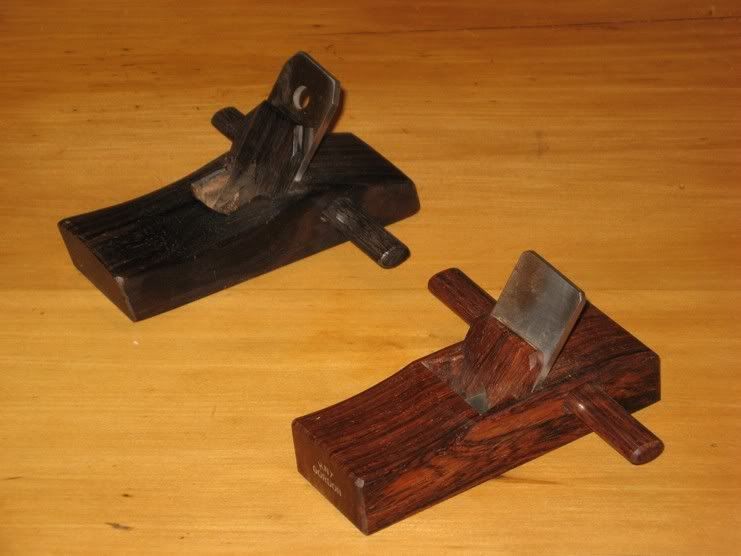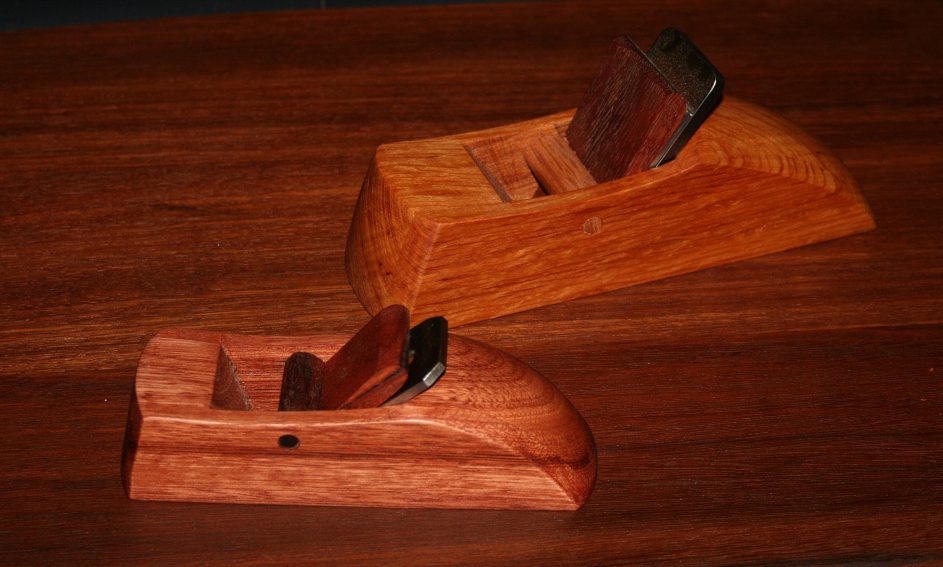J_SAMa
Established Member
Bought it on my trip to China. Cost me RMB 55, which is around GBP 5.5 (not gonna get any cheaper than that). It's actually my first wooden plane. Opened the box but haven't tried it yet.
The wedge looks like ebony but the lighter-colored body certainly doesn't. It looks somewhat closer to rosewood. Workshop Heaven has a line of Mujingfang "Ebony" planes all made of African jackallberry. Those look quite close to mine, despite that mine says the wood is imported from Southeast Asia. Maybe Matthew knows what's exactly up here?
The blade is made of HSS, but according to the seller most Chinese woodworker still freehand them on waterstones and get perfect results. Well I guess there's only one way to find out.
UPDATE: I got a problem... When I tap the wedge in, one side of it will be too tight before the other side even engages at all. Should I leave if for a few days and see how it turns out or should I take a chisel to it (I just came back from China so maybe it's the environment change)? If I go with the latter should I pare the grooves that the wedge fits in?
------------------------------------------------------------------------------------------------------------------------------------------------------------
I'd been sick hence the delay in uploading the pictures.
Finally got around to playing with it (with the blade retracted), just to see if it felt good in my hands. Well, for what it is, yes. It's so small I could just take the handle off and grab the plane by its sides with 2 fingers and a thumb.

Just a little over 100 mm. 60 degree bedding angle. Should work nicely on gnarly-grained woods.


Taken apart. Simplicity to the max, only 3 essential parts plus a somewhat useless handle (on this mini plane the handle is too low and there's not enough clearance between it and the workpiece for an adult's finger to stick in)
FYI here's how one uses a Chinese plane's handle:http://www.hntgordon.com.au/handgripsmooth.htm (The page shows the grip for end grain shooting too. I'd avoid doing that with a 60 degree plane...)

The shape is quite nice, seems ergonomic. Only if it were bigger (or my hands smaller).
I tried taking a close-up of the problematic wedge. But my iPad's camera refused to focus :evil: .
ANOTHER PROBLEM: The brass mouth is not quite properly inlaid into the sole. It is slightly proud, effectively making the sole convexi (the rest of the sole is flat, dead flat). I suppose it'll have to be some rubbing on sandpaper. Now what's a sandpaper suitable for both wood and brass?
Sam
The wedge looks like ebony but the lighter-colored body certainly doesn't. It looks somewhat closer to rosewood. Workshop Heaven has a line of Mujingfang "Ebony" planes all made of African jackallberry. Those look quite close to mine, despite that mine says the wood is imported from Southeast Asia. Maybe Matthew knows what's exactly up here?
The blade is made of HSS, but according to the seller most Chinese woodworker still freehand them on waterstones and get perfect results. Well I guess there's only one way to find out.
UPDATE: I got a problem... When I tap the wedge in, one side of it will be too tight before the other side even engages at all. Should I leave if for a few days and see how it turns out or should I take a chisel to it (I just came back from China so maybe it's the environment change)? If I go with the latter should I pare the grooves that the wedge fits in?
------------------------------------------------------------------------------------------------------------------------------------------------------------
I'd been sick hence the delay in uploading the pictures.
Finally got around to playing with it (with the blade retracted), just to see if it felt good in my hands. Well, for what it is, yes. It's so small I could just take the handle off and grab the plane by its sides with 2 fingers and a thumb.

Just a little over 100 mm. 60 degree bedding angle. Should work nicely on gnarly-grained woods.


Taken apart. Simplicity to the max, only 3 essential parts plus a somewhat useless handle (on this mini plane the handle is too low and there's not enough clearance between it and the workpiece for an adult's finger to stick in)
FYI here's how one uses a Chinese plane's handle:http://www.hntgordon.com.au/handgripsmooth.htm (The page shows the grip for end grain shooting too. I'd avoid doing that with a 60 degree plane...)

The shape is quite nice, seems ergonomic. Only if it were bigger (or my hands smaller).
I tried taking a close-up of the problematic wedge. But my iPad's camera refused to focus :evil: .
ANOTHER PROBLEM: The brass mouth is not quite properly inlaid into the sole. It is slightly proud, effectively making the sole convexi (the rest of the sole is flat, dead flat). I suppose it'll have to be some rubbing on sandpaper. Now what's a sandpaper suitable for both wood and brass?
Sam






